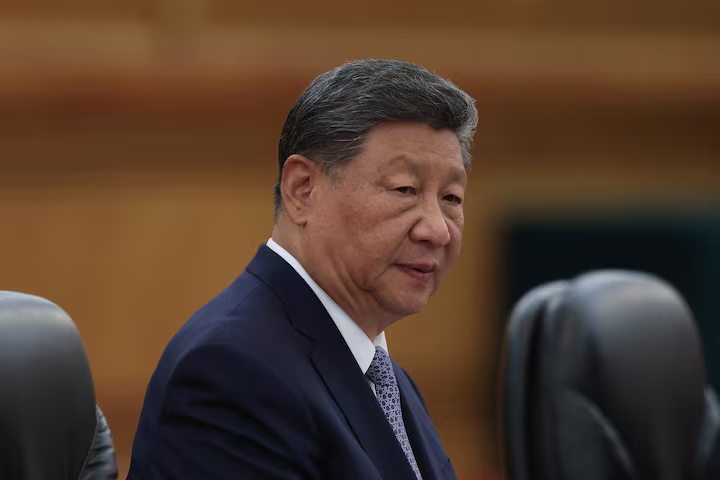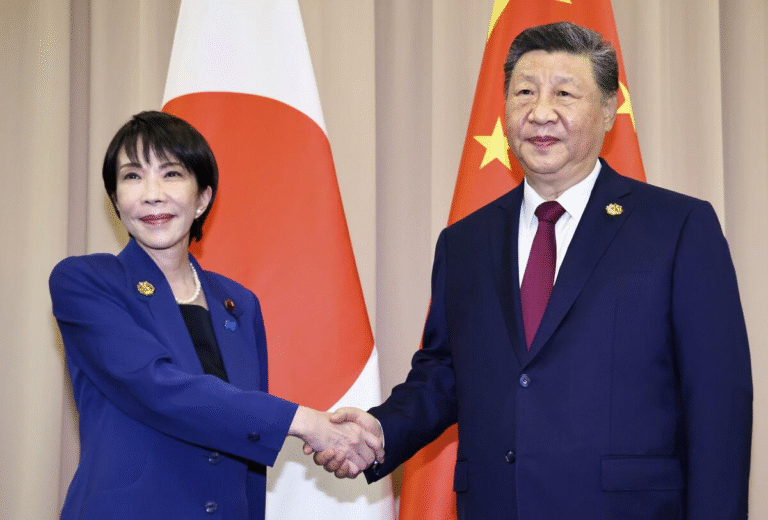
The White House on Saturday (Nov 1) released details about the agreement that United States President Donald Trump reached this week with Chinese President Xi Jinping to de-escalate their countries’ trade war, including US tariff reductions and a pause in Beijing’s new restrictions on rare earth minerals and magnets.
The deal, which also includes resumption of Chinese purchases of American soybeans, averts Trump’s threatened 100 per cent tariff on Chinese goods and extends a delicate trade truce between the world’s two largest economies for about a year.
TARIFF REDUCTION ON FENTANYL-RELATED CHINESE GOODS
The US will halve the 20 per cent tariff on Chinese goods related to supplies of fentanyl opioid precursor chemicals coming from China.
The reduction to 10 per cent on the duties first imposed in February will cut the overall US tariff rate on Chinese imports to about 47 per cent from 57 per cent, according to US officials.
That total includes duties of about 25 per cent imposed on Chinese imports during Trump’s first term in the White House and a reduced 10 per cent “reciprocal” tariff imposed in April and previous “Most Favored Nation” tariff rates.
PAUSE ON CHINA’S RARE EARTH EXPORT CONTROLS
China agreed to a one-year pause on export controls it unveiled this month on rare earth minerals and magnets, which have vital roles in cars, planes and weapons and have become Beijing’s most potent source of leverage in its trade war with Washington.
Those controls would have required export licences for products with even trace amounts of a larger list of elements and were aimed at preventing their use in military products.
The White House said China will also issue general licences for exports of rare earths, gallium, germanium, antimony and graphite for the benefit of US end users and their suppliers.
The White House said that amounted to “the de facto removal of controls China imposed in April 2025 and October 2022”.
China also agreed to suspend all retaliatory tariffs it has announced since Mar 4, including duties on US chicken, wheat, corn, cotton, sorghum, soybeans, pork, beef, aquatic products, fruits, vegetables, and dairy products, the White House said.
It said Beijing would also suspend or remove all retaliatory non-tariff countermeasures taken against the US since Mar 4, such as listing certain American companies on the Chinese government’s end-user and unreliable entity lists.
TRUMP ADMINISTRATION’S EXPORT CONTROLS PAUSED
The US agreed to a one-year pause on an expanded Commerce Department blacklist of companies prohibited from buying US technology goods, including semiconductor manufacturing equipment, a move aimed at averting the use of subsidiaries and other firms to skirt export controls.
The expanded blacklist would have automatically included firms more than 50 per cent owned by companies already on the list and would have had the biggest impact on Chinese companies, banning US exports to thousands more Chinese firms.
CHINA COMMITS TO SOYBEAN PURCHASES
China agreed to buy at least 12 million metric tons of US soybeans in the last two months of 2025, as well as at least 25 million metric tons of US soybeans in each of the following three years, the White House said.
China also agreed to resume purchases of US sorghum and hardwood logs, the White House said.
China had largely stopped buying US soybeans this autumn, purchasing none in September after sourcing its beans from Brazil and Argentina. Washington pressed for more purchases, given loud complaints by US farmers, a key Trump constituency.
Analysts noted that the soybean commitments will only bring China back to its prior levels of US purchases. In 2024, the US exported nearly 27 million tons of soybeans to China.
China promised to vastly expand soybean purchases in the “Phase One” trade deal with Trump that paused a trade war in 2020, but never met the targets as the COVID-19 pandemic struck.
China will also take measures to resume trade from chipmaker Nexperia’s facilities in China, allowing production of critical legacy chips to flow to the rest of the world, the White House said in its fact sheet.
In addition, Beijing will extend its market-based tariff exclusion process for imports from the US, with exclusions to remain valid until Dec 31, 2026, the White House said.
China will terminate its antitrust, anti-monopoly and anti-dumping investigations targeting US firms in the semiconductor supply chain, the White House said.
TRUMP ADMINISTRATION PAUSES NEW PORT FEES
Beijing agreed to remove measures it took in retaliation for Washington’s Section 301 investigation of China’s dominance of the global maritime, logistics and shipbuilding sector, and to remove sanctions imposed on various shipping entities, the White House said.
The Trump administration agreed to pause for one year new port fees imposed on Chinese-built, owned and flagged ships.
The fees, aimed at reviving US commercial shipbuilding, could have added millions of dollars to the cost of each voyage to US ports.
he port fees took effect on Oct 14, along with 100 per cent tariffs on Chinese-built ship-to-shore cranes. They quickly disrupted cargo flows, pushing up container rates as shippers sought to avoid China-linked vessels.
China has imposed its own fees on US-linked ships, including those from global shippers with 25 per cent US ownership.
The White House said it would negotiate with China about the issue in the meantime, while continuing talks with South Korea and Japan on revitalising American shipbuilding.
COOPERATION ON FENTANYL TRAFFICKING
China agreed to take “significant measures” to end the flow of fentanyl to the US, including moves to halt the shipment of certain precursor chemicals to North America and strictly control exports of other chemicals worldwide, the White House said.
US Treasury Secretary Scott Bessent told Fox Business Network this week that working groups from the two countries would “set very objective measures” in the coming weeks on reducing flows to measure success in curbing the deadly opioid blamed for tens of thousands of US overdose deaths every year.
When Trump first imposed the fentanyl-related tariffs, officials in his administration said they were wary of ongoing promises by China to help, and that the tariffs would remain in place until Beijing had taken concrete measures.





